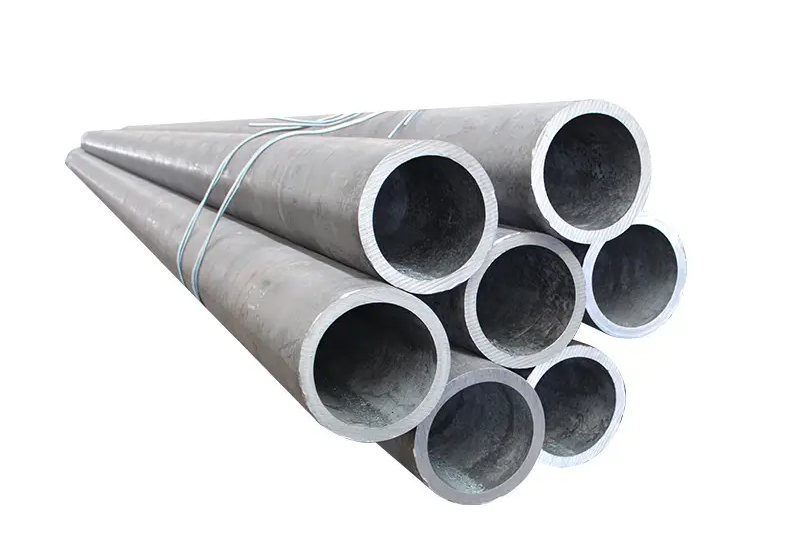
طريقة لحام خطوط الأنابيب ذات الجدران السميكة عالية الضغط من الفولاذ المحلي A335 P91: المجال التقني – يتعلق الاختراع الحالي بمجال تكنولوجيا اللحام, لا سيما فيما يتعلق بطريقة لحام خطوط الأنابيب ذات الجدران السميكة عالية الضغط المصنوعة من الفولاذ المحلي A335 P91.
لدينا أكبر مخزون من الأنابيب غير الملحومة المصنوعة من سبائك الصلب ASTM A335 P91
سبائك الصلب الأنابيب أ 335 ص91:
الحجم : 1/2″ إلى 24 “ومن & ملحوظة:
الجدول الزمني: SCH20, Sch30, Sch40.
نوع : ملحومة / مختلق / سلس
طول : عشوائية واحدة, عشوائية مزدوجة & طول القطع.
نهاية : نهاية عادي, نهاية مشطوفة.
المواد :
سبائك الصلب الأنابيب A335 P91 – كما الأنابيب A335 P91
ASTM A335, Gr. P5, P9, ص 11, P12, ص21, P22 & ص91
ASTM A335 P91 تكوين تركيب أنابيب الكروم
| الصف | الولايات المتحدة | ج ≥ | مينيسوتا | P≤ | S≤ | سي | الجمهورية التشيكية | مو |
| ص1 | K11522 | 0.10~0.20 | 0.30~0.80 | 0.025 | 0.025 | 0.10~0.50 | - | 0.44~0.65 |
| ص2 | K11547 | 0.10~0.20 | 0.30~0.61 | 0.025 | 0.025 | 0.10~0.30 | 0.50~0.81 | 0.44~0.65 |
| P5 | K41545 | 0.15 | 0.30~0.60 | 0.025 | 0.025 | 0.50 | 4.00~6.00 | 0.44~0.65 |
| ص5ب | K51545 | 0.15 | 0.30~0.60 | 0.025 | 0.025 | 1.00~2.00 | 4.00~6.00 | 0.44~0.65 |
| P5c | K41245 | 0.12 | 0.30~0.60 | 0.025 | 0.025 | 0.50 | 4.00~6.00 | 0.44~0.65 |
| P9 | S50400 | 0.15 | 0.30~0.60 | 0.025 | 0.025 | 0.50~1.00 | 8.00~10.00 | 0.44~0.65 |
| ص 11 | K11597 | 0.05~0.15 | 0.30~0.61 | 0.025 | 0.025 | 0.50~1.00 | 1.00~ 1.50 | 0.44~0.65 |
| P12 | K11562 | 0.05~0.15 | 0.30~0.60 | 0.025 | 0.025 | 0.50 | 0.80~1.25 | 0.44~0.65 |
| ص15 | ك11578 | 0.05~0.15 | 0.30~0.60 | 0.025 | 0.025 | 1.15~1.65 | - | 0.44~0.65 |
| ص21 | K31545 | 0.05~0.15 | 0.30~0.60 | 0.025 | 0.025 | 0.50 | 2.65~3.35 | 0.80~1.60 |
| P22 | K21590 | 0.05~0.15 | 0.30~0.60 | 0.025 | 0.025 | 0.50 | 1.90~2.60 | 0.87~1.13 |
| ص91 | K91560 | 0.08~0.12 | 0.30~0.60 | 0.020 | 0.010 | 0.20~0.50 | 8.00~9.50 | 0.85~1.05 |
| P92 | K92460 | 0.07~0.13 | 0.30~0.60 | 0.020 | 0.010 | 0.50 | 8.50~9.50 | 0.30~0.60 |
معيار تركيب الأنابيب A335 Gr P91
| الاشتراكية الدولية, % | الجمهورية التشيكية, % | ج, % | مو, % | مينيسوتا, % | ف, % | N, % | S, % | V, % | ني, % | ملحوظة:, % | ال, % |
| 0.2 إلى 0.5 | 8.0 إلى 9.5 | 0.08 إلى 0.12 | 0.85 إلى 1.05 | 0.3 إلى 0.6 | 0.02 | 0.03 إلى 0.07 | 0.01 | 0.18 إلى 0.25 | 0.4 | 0.06 إلى 0.10 | 0.04 |
جدول القوة الميكانيكية للأنابيب ASTM A335 P91
| استطالي | خصائص الشد | HB | خصائص العائد |
| 20 | 585 | 250 | 415 |
درجة المواد المكافئة لأنابيب SA335 Gr P91
| الولايات المتحدة | ASTM | مقابل المواد | ASME |
|---|---|---|---|
| K91560 | A335 P91 | K90901, T91, 1.4903, X10CrMoVNb9-1 | SA335 ص 91 |
| ASTM | ASME | JIS ز 3458 | الولايات المتحدة | بكالوريوس | الدين | ISO | عضلات المعدة | نك | LRS |
|---|---|---|---|---|---|---|---|---|---|
| A335 P9 | SA335 P9 | STPA 26 | S50400 | 3604 ص1 629-470 | 2604 الثاني TS38 |
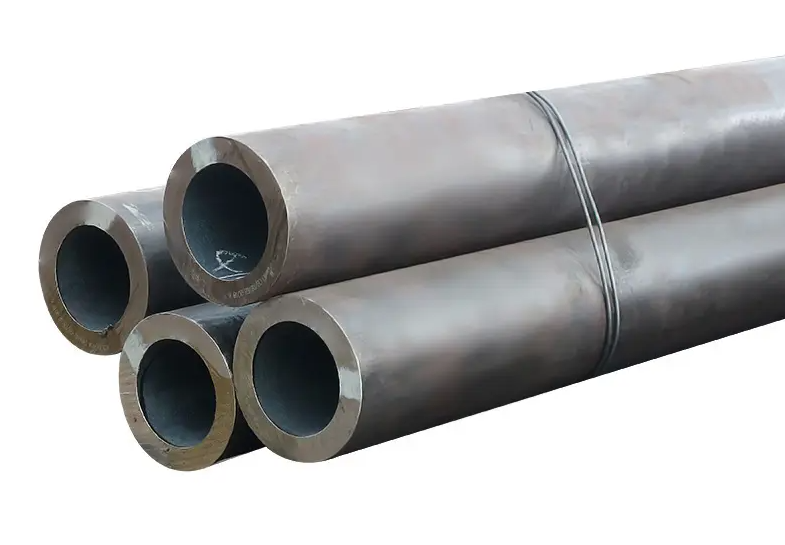
خلفية: الفولاذ A335 P91 عبارة عن فولاذ 9Cr-1Mo معدّل, في المقام الأول دمج
A335P11 A335P91 A335P22 40cr 10CrMO910 35crmo 27SiMn Q345B 16Mn أنابيب الصلب الملحومة
تصنيف عناصر السبائك مثل V وNb في الفولاذ الأصلي المقاوم للحرارة 9Cr-1Mo. يمتلك هذا الفولاذ مقاومة ممتازة للأكسدة عند درجات الحرارة العالية, مقاومة التآكل بالبخار عند درجات الحرارة العالية, ومقاومة الزحف, تقليل الوزن الهيكلي بشكل فعال وإيجاد تطبيق واسع النطاق في وحدات الغلايات الكبيرة, أنظمة خطوط الأنابيب, وصناعة البتروكيماويات. ومع ذلك, بسبب طبيعة المارتنسيت المبردة بالهواء للفولاذ A335 P91, فهو يُظهر مرونة أقل وقابلية لحام أقل, فرض متطلبات عالية على عمليات اللحام, تأثير صلابة المفاصل الملحومة, هشاشة اللحام, المعالجة الحرارية بعد اللحام, ومناطق اللحامات المتأثرة بالحرارة. يستخدم لحام الفولاذ التقليدي A335 P91 عمومًا اللحام اليدوي بقوس الغاز بالتنغستن (GTAW) لتمرير الجذر ولحام القوس المعدني المحمي يدويًا (SMAW) لملء والتغطية, مما يستلزم رقابة صارمة على طاقة الخط, تسخين درجة الحرارة, ودرجة الحرارة البينية أثناء عملية اللحام. تتطلب هذه الطريقة مستوى عالٍ من بيئة اللحام ومهارة اللحام, وكفاءة اللحام اليدوي منخفضة للغاية, استهلاك الوقت والجهد, تقييد تقدم الأنابيب بشدة, التأثير على جداول البناء, وهذا واضح بشكل خاص بالنسبة لخطوط الأنابيب ذات الجدران السميكة ذات القطر الكبير.
ولذلك, إن الاختيار العقلاني لمعلمات وعمليات اللحام للفولاذ A335 P91 وتطوير ظروف عملية اللحام المناسبة للإنتاج له قيمة عملية واقتصادية كبيرة.
محتوى الاختراع: لمعالجة أوجه القصور في التكنولوجيا الحالية, تتمثل المشكلة الفنية التي يتعين حلها بواسطة الاختراع الحالي في توفير طريقة لحام خطوط الأنابيب ذات الجدران السميكة عالية الضغط المصنوعة من الفولاذ المحلي A335 P91, تهدف إلى تحسين كفاءة اللحام واللحام جودة, تقليل تكاليف البناء وكثافة العمالة, وتحسين بيئة العمل.
لتحقيق الأهداف المذكورة أعلاه, يستخدم الاختراع الحالي الحلول التقنية التالية:
طريقة لحام خطوط الأنابيب ذات الجدران السميكة عالية الضغط من الفولاذ المحلي A335 P91, متضمنة الخطوات التالية بالتسلسل:
(1) معالجة شطبة ما قبل اللحام: قم بمعالجة منطقة اللحام لخط الأنابيب ليتم لحامها في مشطوف مزدوج على شكل حرف V, قم بإجراء فحص تغلغل الصبغة على السطح المائل لضمان عدم وجود تشققات في السطح, وتنظيف الشطبة والصدأ السطحي, زيت, والأكاسيد ضمن مساحة 20 مم على جانبي المجسم المائل;
الاستمرار في طريقة اللحام للأنابيب الفولاذية ذات الجدران السميكة عالية الضغط A335 P91 المنتجة محليًا:
- المعالجة الحرارية بعد اللحام: بعد اللحام, أغلق طرفي الأنبوب واستخدم التسخين الكهربائي لتسخين المنطقة على جانبي اللحام, على الأقل 3 أضعاف عرض اللحام ولا يقل عن 25 ملم. قم بتسخين المنطقة إلى درجة حرارة تتراوح بين 750-770 درجة مئوية واحتفظ بها لمدة 2.5-4 ساعات, اعتمادا على سمك الأنابيب.
يرجى ملاحظة أنه يتم مراقبة درجة الحرارة بهذه الطريقة باستخدام مقياس حرارة يعمل بالأشعة تحت الحمراء. تتميز طريقة اللحام هذه للأنابيب الفولاذية ذات الجدران السميكة ذات الضغط العالي A335 P91 بالمزايا التالية:
-
استخدام متعدد الطبقات, يعمل اللحام متعدد التمريرات على تقليل مساحة المقطع العرضي لكل طبقة لحام, تحسين صلابة الوصلة الملحومة وتجنب تضييق المنطقة المتأثرة بالحرارة في اللحامات السميكة, وكذلك تليين وصلة اللحام أثناء التشغيل طويل الأمد في درجات حرارة عالية.
-
اللحام بقوس غاز التنغستن اليدوي (GTAW) لحام الجذر لديه سرعة لحام أبطأ, ويساعد إغلاق طرفي الأنبوب على التحكم في درجة حرارة الطبقة البينية. اللحام بالقوس المغمور الأوتوماتيكي (رأيت) لطبقات التعبئة والتغطية لديها سرعة لحام أسرع وتيار أعلى, إطلاق الحرارة بسرعة أكبر. يجب أن يكون أحد طرفي الأنبوب على الأقل مفتوحًا, ويمكن إجراء اللحام المستمر دون الحاجة إلى التحكم في درجة حرارة الطبقة البينية.
-
استخدام أسلاك اللحام ذات القطر الصغير (لا يزيد عن 2.5 ملم) وتدفق الهيدروجين المنخفض للحام يمكن أن يقلل من الطاقة الخطية أثناء عملية اللحام, تحسين معدل ترسيب اللحام, صقل الحبوب المواد الأساسية, وتقليل احتمالية حدوث عيوب مثل المسامية والشقوق في اللحام.
-
في البيئات العاصفة, إن تأثير الحماية للحام القوس المغمور الأوتوماتيكي أفضل من عمليات اللحام القوسي الأخرى.
-
مقارنة بطرق اللحام اليدوية التقليدية, تعمل هذه الطريقة على تقصير دورة المعالجة الحرارية واللحام بشكل فعال, يحسن اللحام جودة وكفاءة اللحام, يقلل من كثافة اليد العاملة, ويوفر تكاليف البناء.
مثال التنفيذ 1: استخدام خط الأنابيب المحلي A335P91 DN350 كمادة أساسية, تم اعتماد طريقة اللحام التالية:
(1) تتم معالجة منطقة اللحام للأنبوب المراد لحامه إلى أخدود مزدوج على شكل حرف V كما هو موضح في الشكل 1, مع ارتفاع حافة حادة 1 مم, زاوية سفلية قدرها 60±5° في اتجاه طول الأنبوب, ارتفاع 15 ملم, وزاوية عليا 78-82 درجة في اتجاه طول الأنبوب. يتم فحص لون سطح الأخدود للتأكد من عدم وجود تشققات سطحية على الأخدود. الصدأ السطحي, بقع الزيت, أكاسيد, إلخ. يتم تنظيفها في حدود 20 مم على جانبي الأخدود;
(2) يتم تجميع قسمي الأنبوب الملحوم, التأكد من أن فجوة الوجه النهائية للمفصل المؤخرة هي 3-6 مم, الارتفاع متساوي, وعدم المحاذاة لا يزيد عن 1 مم;
(3) يستخدم اللحام بقوس الأرجون اليدوي GTAW للحام السفلي. قبل اللحام, يتم حظر المنافذ النهائية للأنبوب المراد لحامه, ويتم تعبئة الجدار الداخلي أو الجزء الخلفي من اللحام بغاز الأرجون للحماية. يتم تسخين الأنابيب الفولاذية المراد لحامها مسبقًا, ويتم مراقبة درجة حرارة الأخدود في الوقت الفعلي باستخدام مقياس حرارة يعمل بالأشعة تحت الحمراء. عندما تصل درجة الحرارة إلى 160 درجة مئوية, يبدأ اللحام, باستخدام سلك اللحام ER90S-B9 بقطر 100 سم للحام ثلاث طبقات. يتم تحديد معلمات العملية على النحو التالي: اتصال إيجابي للتيار المستمر لإمدادات الطاقة, تيار اللحام 118A, جهد القوس 14 فولت, وسرعة اللحام 3-10 سم/دقيقة. يجب الانتباه إلى النقاط التالية أثناء اللحام اليدوي بقوس الأرجون GTAW: A) يجب ألا يتم إشعال سطح قطعة العمل المراد لحامها بالقوس, تم اختباره للتيار, أو ملحومة مؤقتًا للدعم أو المشبك;ب) يبدأ اللحام اليدوي بقوس الأرجون من أدنى نقطة في الأنبوب المراد لحامه, ويتم لحامها بشكل متناظر من قبل شخصين, مع وصلات اللحام متداخلة بين 100-150 ملم; ج) أثناء اللحام اليدوي بقوس الأرجون, يجب مراقبة درجة حرارة التسخين المسبق على جانبي الأخدود في الوقت الفعلي, ويجب التحكم بدقة في درجة حرارة التسخين المسبق بين 150 درجة مئوية و200 درجة مئوية; D) أثناء اللحام اليدوي بقوس الأرجون, وينبغي اتخاذ تدابير حماية الرياح, ويجب ألا تتجاوز سرعة الرياح في بيئة اللحام 2 م / ث. يجب ألا يكون هناك أي مسودة في الأنبوب ليتم لحامه, والرطوبة, مطر, وينبغي اتخاذ تدابير الحماية من الثلوج;
(4) يتم استخدام اللحام القوسي المغمور الأوتوماتيكي SAW للتعبئة والتغطية. قبل تعبئة وتغطية لحام القوس المغمور الأوتوماتيكي, تم فك انسداد أحد طرفي الأنبوب المراد لحامه على الأقل, ويتم تسخين منطقة اللحام مسبقًا. عندما تصل درجة الحرارة إلى 200 درجة مئوية, يبدأ اللحام المستمر, استخدام سلك اللحام EB9 بقطر وتدفق اللحام MARATHON543 للملء والتغطية متعدد الطبقات والممرات المتعددة. يتم تحديد معلمات اللحام SAW على النحو التالي: اتصال عكسي للتيار المستمر لمصدر الطاقة, تيار اللحام 280A, جهد القوس 28 فولت, وسرعة اللحام 25-45 سم/دقيقة.
يجب الانتباه إلى النقاط التالية أثناء عملية اللحام بالقوس المغمور الأوتوماتيكي SAW:
A) يجب أن يظل سلك اللحام نظيفًا وجافًا, ويجب تخزين تدفق اللحام في مكان جاف لمنع امتصاص الرطوبة;
ب) يجب تغذية سلك اللحام بسلاسة وبشكل متساوٍ, ويجب إضافة تدفق اللحام في الوقت المناسب لضمان اللحام جودة;
ج) يجب أن تكون سرعة اللحام مستقرة, ويجب أن يظل مسدس اللحام متعامدًا مع محور الأنبوب لضمان اتساق حبة اللحام;
D) يجب إزالة خبث اللحام في الوقت المناسب بعد اكتمال كل طبقة من طبقات اللحام, ويجب تنظيف سطح اللحام بفرشاة سلكية أو عجلة طحن لضمان جودة الطبقة التالية من اللحام;
البريد) يجب مراقبة عملية اللحام في الوقت الحقيقي, ويجب تعديل معلمات اللحام في الوقت المناسب وفقًا للوضع الفعلي لضمان جودة اللحام. بعد الانتهاء من اللحام, يجب فحص سطح اللحام بصريا وباختبارات غير إتلافية للتأكد من عدم وجود عيوب مثل الشقوق, المسام, شوائب الخبث, والاختراق غير الكامل. أخيراً, يجب معالجة الوصلة الملحومة بالحرارة وفقًا لمتطلبات العملية للتخلص من إجهاد اللحام وتحسين الخواص الميكانيكية للوصلة الملحومة.
مثال التنفيذ 2: استخدام خط الأنابيب المستورد A335P91 DN500 كمادة أساسية, تم اعتماد طريقة اللحام التالية:
(1) تتم معالجة منطقة اللحام للأنبوب المراد لحامه إلى أخدود مزدوج على شكل حرف V كما هو موضح في الشكل 1, مع ارتفاع حافة حادة 1.5 ملم, زاوية سفلية قدرها 60±5° في اتجاه طول الأنبوب, ارتفاع 20 ملم, وزاوية عليا 78-82 درجة في اتجاه طول الأنبوب. يتم فحص لون سطح الأخدود للتأكد من عدم وجود تشققات سطحية على الأخدود. الصدأ السطحي, بقع الزيت, أكاسيد, إلخ. يتم تنظيفها في حدود 20 مم على جانبي الأخدود;
(2) يتم تجميع قسمي الأنبوب الملحوم, التأكد من أن فجوة الوجه النهائية للمفصل المؤخرة هي 4-8 مم, الارتفاع متساوي, ولا يزيد المحاذاة الخاطئة عن 1.5 مم;
(3) يتم استخدام اللحام القوسي المغمور الأوتوماتيكي SAW في اللحام السفلي. قبل اللحام, يتم حظر المنافذ النهائية للأنبوب المراد لحامه, ويتم تعبئة الجدار الداخلي أو الجزء الخلفي من اللحام بغاز الأرجون للحماية. يتم تسخين الأنابيب الفولاذية المراد لحامها مسبقًا, ويتم مراقبة درجة حرارة الأخدود في الوقت الفعلي باستخدام مقياس حرارة يعمل بالأشعة تحت الحمراء. عندما تصل درجة الحرارة إلى 200 درجة مئوية, يبدأ اللحام, استخدام سلك اللحام EB9 بقطر وتدفق اللحام MARATHON543 للملء والتغطية متعدد الطبقات والممرات المتعددة. يتم تحديد معلمات اللحام SAW على النحو التالي: اتصال عكسي للتيار المستمر لمصدر الطاقة, تيار اللحام 350A, جهد القوس 32 فولت, وسرعة اللحام 25-45 سم/دقيقة. يجب الانتباه إلى النقاط التالية أثناء عملية اللحام بالقوس المغمور الأوتوماتيكي SAW: A) يجب أن يظل سلك اللحام نظيفًا وجافًا, ويجب تخزين تدفق اللحام في مكان جاف لمنع امتصاص الرطوبة; ب) يجب تغذية سلك اللحام بسلاسة وبشكل متساوٍ, وينبغي إضافة تدفق اللحام في الوقت المناسب لضمان جودة اللحام; ج) يجب أن تكون سرعة اللحام مستقرة, ويجب أن يظل مسدس اللحام متعامدًا مع محور الأنبوب لضمان اتساق حبة اللحام; D) يجب إزالة خبث اللحام في الوقت المناسب بعد اكتمال كل طبقة من طبقات اللحام, ويجب تنظيف سطح اللحام بفرشاة سلكية أو عجلة طحن لضمان جودة الطبقة التالية من اللحام; البريد) يجب مراقبة عملية اللحام في الوقت الحقيقي, ويجب تعديل معلمات اللحام في الوقت المناسب وفقًا للوضع الفعلي لضمان جودة اللحام.
(4) يتم استخدام اللحام القوسي المغمور الأوتوماتيكي SAW للتعبئة والتغطية. قبل تعبئة وتغطية لحام القوس المغمور الأوتوماتيكي, تم فك انسداد أحد طرفي الأنبوب المراد لحامه على الأقل, ويتم تسخين منطقة اللحام مسبقًا. عندما تصل درجة الحرارة إلى 250 درجة مئوية, يبدأ اللحام المستمر, استخدام سلك اللحام EB9 بقطر وتدفق اللحام MARATHON543 للملء والتغطية متعدد الطبقات والممرات المتعددة. يتم تحديد معلمات اللحام SAW على النحو التالي: اتصال عكسي للتيار المستمر لمصدر الطاقة, تيار اللحام 450A, جهد القوس 36 فولت, وسرعة اللحام 25-45 سم/دقيقة. بعد الانتهاء من اللحام, يجب فحص سطح اللحام بصريا وباختبارات غير إتلافية للتأكد من عدم وجود عيوب مثل الشقوق, المسام, شوائب الخبث, والاختراق غير الكامل. أخيراً, يجب معالجة الوصلة الملحومة بالحرارة وفقًا لمتطلبات العملية للتخلص من إجهاد اللحام وتحسين الخواص الميكانيكية للوصلة الملحومة.

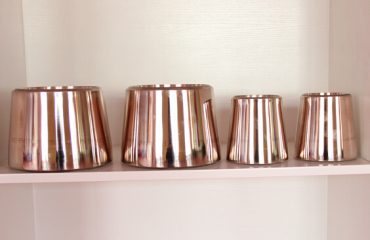
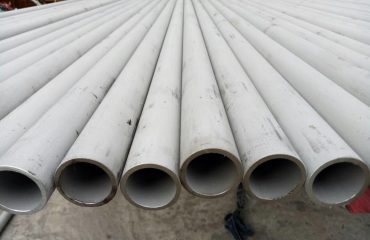
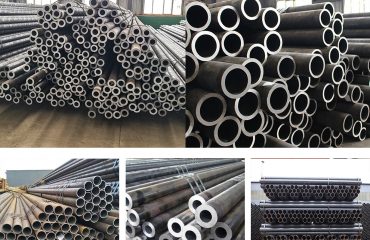
يجب ان تكون تسجيل الدخول لإضافة تعليق.